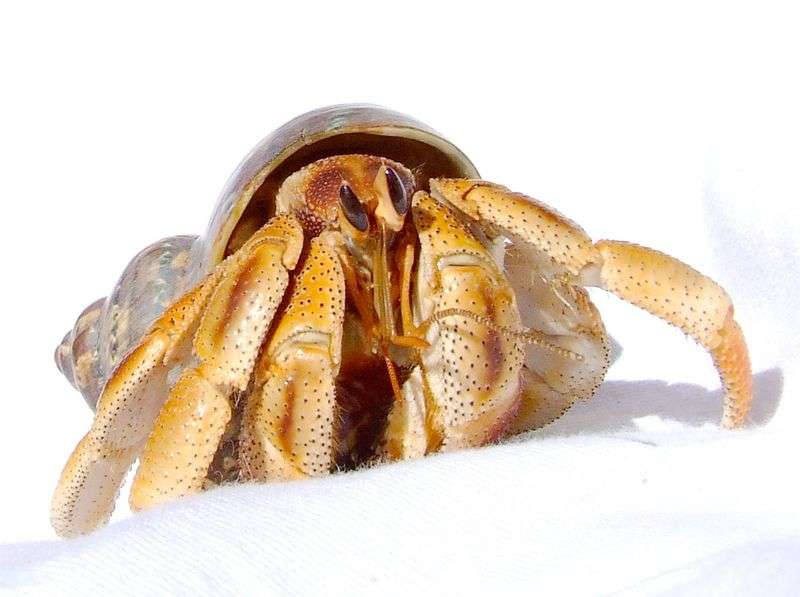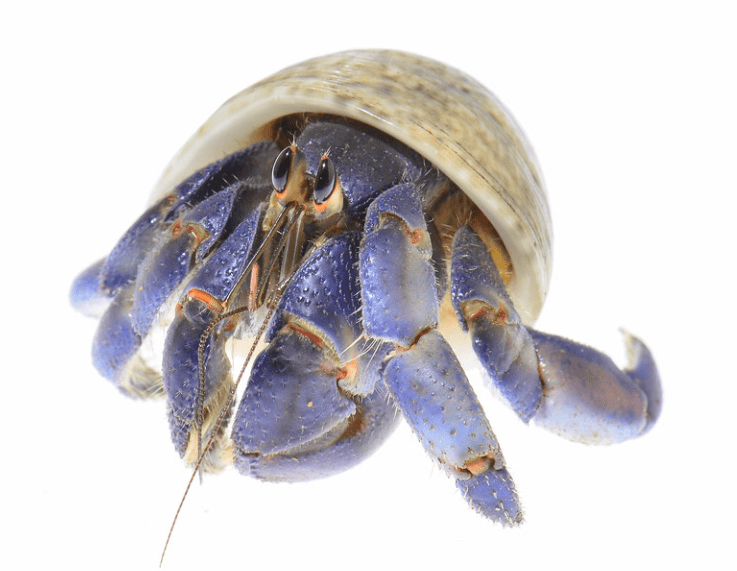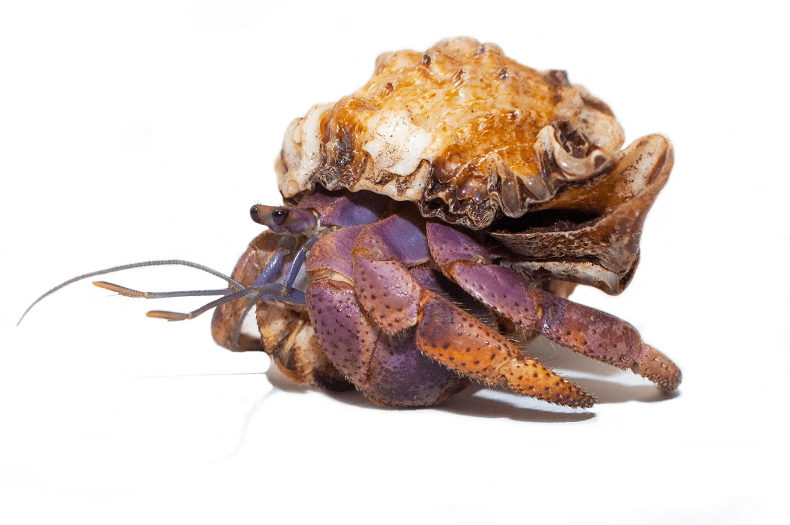
Description
A type of land hermit crab is the Ecuadorian hermit crab (Coenobita compressus), commonly referred to as the Pacific hermit crab. The colour of the carapace can vary from light to dark brown with mottling. The colour of these hermit crabs varies quite a bit. Young people’s colouring is often homogeneous and might range from blue-green to gray-brown. Adults can also range in colour from a very light grey to nearly black to brown. Adults’ skin tones can range from being uniform to having a strong contrast.
Compressed and typically brown dorsally, white laterally, and ventrally are the characteristics of the eyestalks. The eyes of Caribbean hermit crabs are thicker and more oval-shaped than the spherical eyes of other species. The base of the antennae has a black diagonal stripe behind it. Chelipeds have some light brown tubercles and are a medium brown to brownish-orange colour. Their large claw features four or five little ridges on the top of it. The second set of walking legs has tips that are darker than the rest of the legs. Granules of light and dark brown colour cover the second and third walking legs.
Distribution
The Lower California to Chile region of Central and South America is home to the Ecuadorian hermit crab. Per, Ecuador, Colombia, Chile, Panama, El Salvador, Costa Rica, and Mexico are among the places where they can be found.
Behavior
Ecuador Hermit crabs are especially active at night. In the evening, just before sunset, activity usually starts. However, many hermit crabs are active even throughout the day when they are kept in captivity or amid wet vegetation.
Ecuadorian hermit crabs are very social animals. In their natural environment, they interact with Hermit crabs from Ecuador are very social creatures. In their native habitat, they communicate with one another and create sizable colonies, which also enable them to exchange shells as needed. This kind of hermit crab is quite active. Additionally, they move very quickly. Even among hermit crabs of the same size, there is a significant range in speed. Some people have been observed to crawl up to 0.25 mph (0.4 km/h).
These crabs have a variety of personalities, and how they behave also varies widely between individuals. While some Ecuadorian hermit crabs can be hesitant and prefer to flee to their hiding spots when startled, others can be gregarious or even violent.

Keeping as Pet
Tank Size (Enclosure):
Don’t judge them by their size. Ecuadorian hermit crabs are very active creatures and require a lot of room in the tank to roam about. The minimum suggested tank size for one tiny Coenobita compressus is ten gallons (fourty litres). You will need a 20-gallon (80 litre) tank or perhaps more for a pair of crabs.
Water:
Coenobita compressus has evolved to survive in coastal areas. As a result, they require continuous access to seawater in captivity to maintain gill moisture. Without access to fresh and salt water, they will perish. Hermit crabs are extremely susceptible to water loss. For ionic and thermal balance, they therefore fill their shell with both saltwater and fresh water.
In order to produce a favourable environment for this species, both freshwater and saltwater must exist in the crabitat.
Temperature:
Always keep the enclosure between 78 and 88 degrees Fahrenheit (26 and 31 degrees Celsius). The Coenobita compressus prefers warm weather. These hermit crabs become sluggish and slow even at somewhat lower temperatures.
Humidity:
Hermit crabs require humid air for proper breathing. Therefore, a desirable range is thought to be between 70% and 90%.
Diet:
20% of the meal should be a diet based on meat, and 80% should be veggies. The main issue with raising Ecuadorian hermit crabs in captivity is that they can be extremely finicky eaters.
If something does not like them, it is not unusual for them to refuse to eat for a few days. It is therefore strongly advised that they regularly alter their diet. Crabs on a multi-item diet grow more quickly than those fed a single-item diet. Coenobita compressus will eat a variety of foods in captivity, including maize, carrots (which provide the carotene they need to maintain their colour), leafy vegetables, sweet potatoes, spinach, tree bark oak leaves, nuts and seeds, bananas, cranberries, broccoli, crickets, red peppers, squash, pumpkin, dead snails, and other insects.
Table





